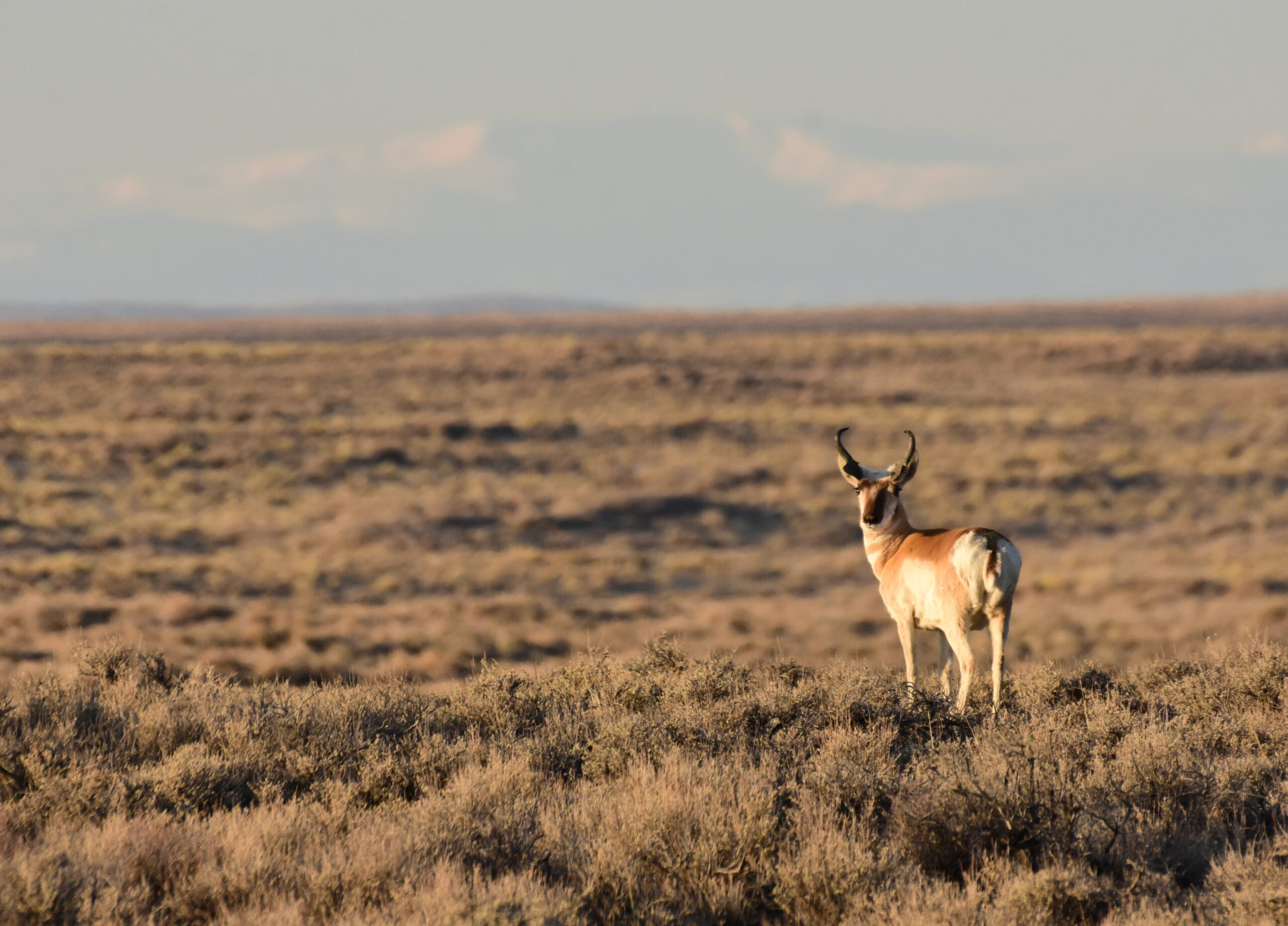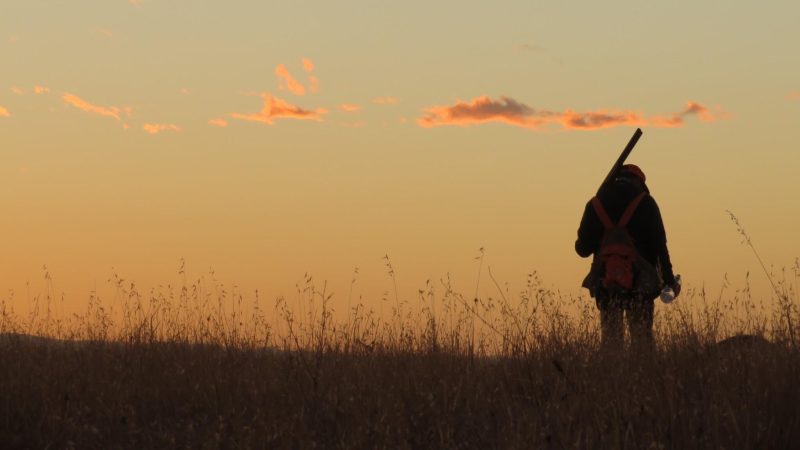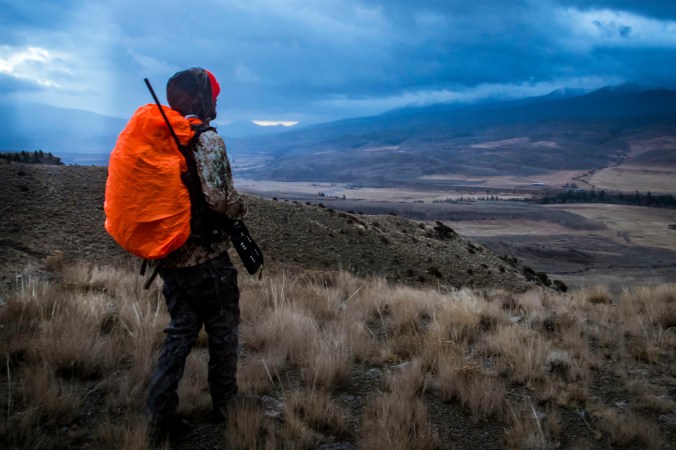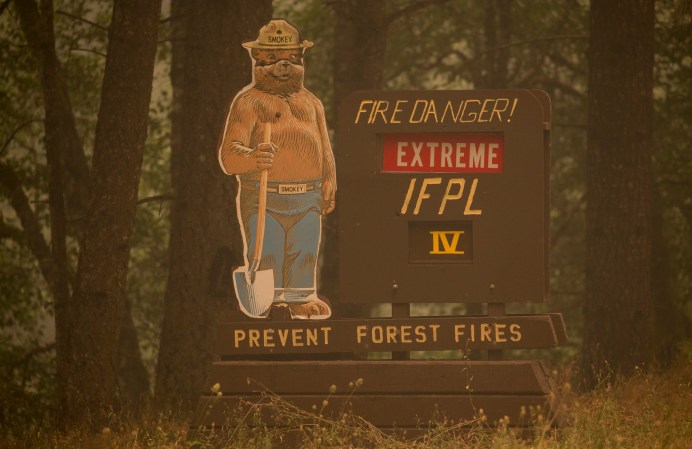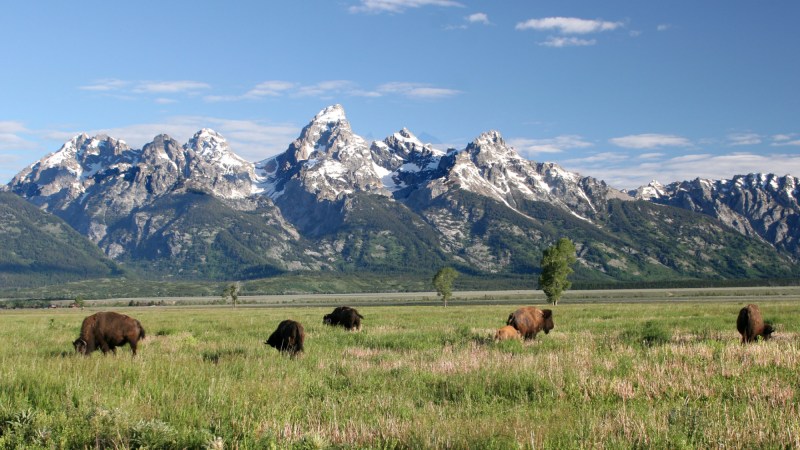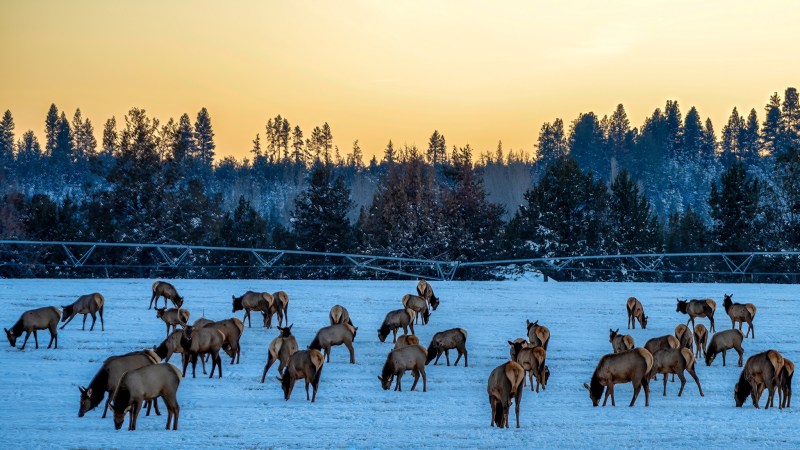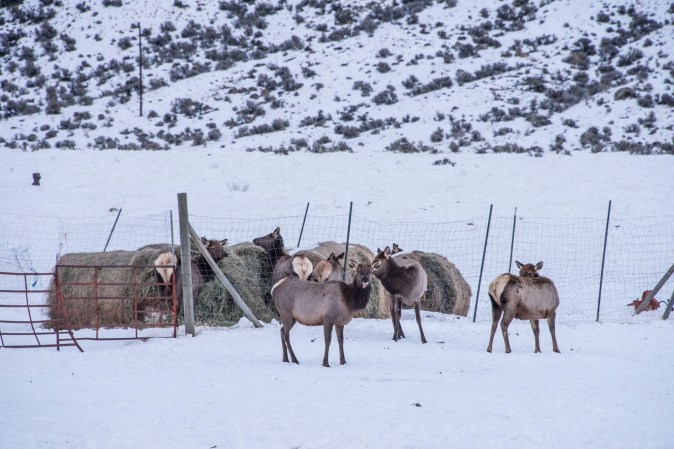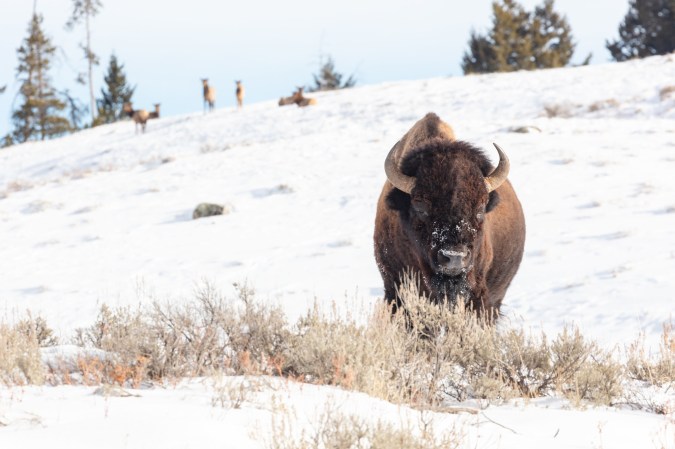Earlier this week, House Republicans gathered enough votes to narrowly pass the WEST Act, which if the Senate concurs would nullify the Bureau of Land Management’s new “Conservation and Landscape Health” rule that elevates conservation priorities on 245 million acres of federal public land.
The WEST (Western Economic Security Today) Act passed the house 212 to 202, largely on the basis of concerns that the BLM’s rules would overturn decades of traditional land management in the West. (You can see how your representative voted here.) It’s one of a bundle of bills that can collectively be considered the Republican-controlled Congress’s rejection of what lawmakers call over-reach by the Biden Administration to regulate natural resources through agency rule-making.
In the case of the BLM rule, the agency proposes elevating conservation to the same land-management priority that traditional uses, such as grazing, mining, and energy development have had for decades. Republicans voting for its nullification were apparently swayed by critics of the rule, including the livestock industry and energy companies that lease federal mineral rights, who worry the change could destabilize Western economies.
One result is that conservation groups are now scrambling to rally supporters to defeat the WEST Act when it is considered in the Senate.
What is going on here? Why the reconsideration of Congressional support for the BLM’s rule, and what is so odious about the rule itself? The answer depends in part on where you physically stand, but also your political persuasion, and your relationship to the federal government.
The most vocal opponents of the BLM’s rule are conservative Westerners like Wyoming’s senior senator John Barrasso (R-Wyo), whose blistering statement following the BLM’s release of its public-land rule accused the Biden Administration of “allowing federal bureaucrats to destroy our way of life.”
Montana’s governor, Greg Gianforte (R), meanwhile, called the BLM rule “a solution in search of a problem.”
Other opponents claim (so far without examples) that the change could impede public access to federal lands, could tilt management away from uses that have buoyed rural economies in the West for nearly a century, and could invite new and disruptive user groups into land-management discussions.
The emphasis on conservation is concerning to some traditional BLM users. The National Cattlemen’s Beef Association and Public Lands Council, both representing BLM lease-holders, worry that the administrative rule “makes serious additions to the leasing structure for federal land without authorization or direction from Congress.”
“The Conservation and Landscape Health rule rearranges agency priorities by putting a new, single use on equal footing with long established uses that Congress explicitly directed,” the NCBE said in a statement.
Other elements of the plan grate Western lawmakers. Those include using “indigenous knowledge” to guide management decisions on federal lands, emphasizing the use of the Areas of Critical Environmental Concern designation to protect sensitive BLM landscapes, and enforcing standards of “land health” in considerations of BLM land use beyond the context of livestock grazing.
The Concept of Conservation Leasing
But there’s another element to the BLM’s public-land rule that is sticking in the throats of Western conservatives and their representatives. The rule also creates a provision for what’s called “conservation leasing” of BLM land, which includes two separate mechanisms. One is called “compensatory mitigation leasing” which would enable BLM managers to require impacts of developments like solar farms and mines to be mitigated through habitat conservation measures on BLM land. “Restoration leasing” would empower the agency to consider market-based solutions for measures that improve the ecological health of BLM land.
The leasing concept is a novel market-driven tool to make our public lands more resilient to drought, invasive species, and to live up to the multiple-use mandate that has guided public-land management for decades. Because it relies on voluntary, collaborative, incentive-based conservation.
Brian Yablonski, the CEO of Montana-based think tank Property and Environment Research Center which promotes market-based conservation solutions, says he expected little resistance to the idea in the conservative Congress.
“I thought that the mitigation provision would be the least controversial thing in this rule,” says Yablonski. “There are other regulatory details [in the public-lands rule] that I’d argue are a bigger deal. But the market-based voluntary incentives should have had buy-in from Republicans. We think it’s short-sighted and a mistake to lash out at what is an innovative, creative tool that both [political] parties might want to consider going forward.”
What Does the BLM Rule Actually Do?
While the conservation-leasing provision has gotten most attention, the elevation of conservation as a co-equal priority on BLM lands isn’t a radical change, say insider sources.
“Just stepping back, this is a big deal on paper, but does not change the way the BLM can operate on the ground,” says a source who spoke on background. “These are all management tools and actions that the department has deployed for a long time with varying degrees of effectiveness. Things like ACECs are already in the toolkit, and the BLM has looked at ecosystem resilience and already applies conservation management actions when they’re revising a land-use plan. So these are not new. What the rule does is make the application of conservation tools more consistent and less scattershot.”
The source noted that the public-land rule will also be shaped as it conforms to the BLM’s implementation manual, which is the “bible” used by area-office line managers as they consider application of the rules on the ground.
As for the leasing provisions, one of the biggest concerns of traditional BLM users has been addressed in the rule and its enabling guidance. The concern is that conservation groups might be able to outbid grazers, essentially claiming environmental degradation as a basis for hijacking existing leases that are an established part of most Western livestock producers’ operations. That’s explicitly rejected in the BLM’s rule, says the source.
“Any conservation lease would be an overlay on existing uses,” says the source. “The rule specifically says the BLM would not authorize a restoration or mitigation lease if the proposed work is incompatible with existing leases, and it would require agreement of all parties. So there’s abundant protection for existing users.”
Mitigation leases are designed to accommodate beneficial development of BLM land, including an unprecedented amount of solar energy development. The BLM earlier this year released its “roadmap” for solar energy development across the West. The new mitigation leasing provision would allow developers to offset impacts of a new solar farm on BLM land by improving BLM land elsewhere.
“This ability has literally not existed before,” says the source. “Under traditional guidance and rules, a developer would have to try to find private land that was open to mitigation, and that’s been a big barrier [to solar development]. Using the new rule, the BLM could condition a solar farm by requiring that mitigation be done on BLM land that maybe needs some improvements, which would be paid for by the developer. That’s a positive outcome.”
Amplifying Public-Land Conservation
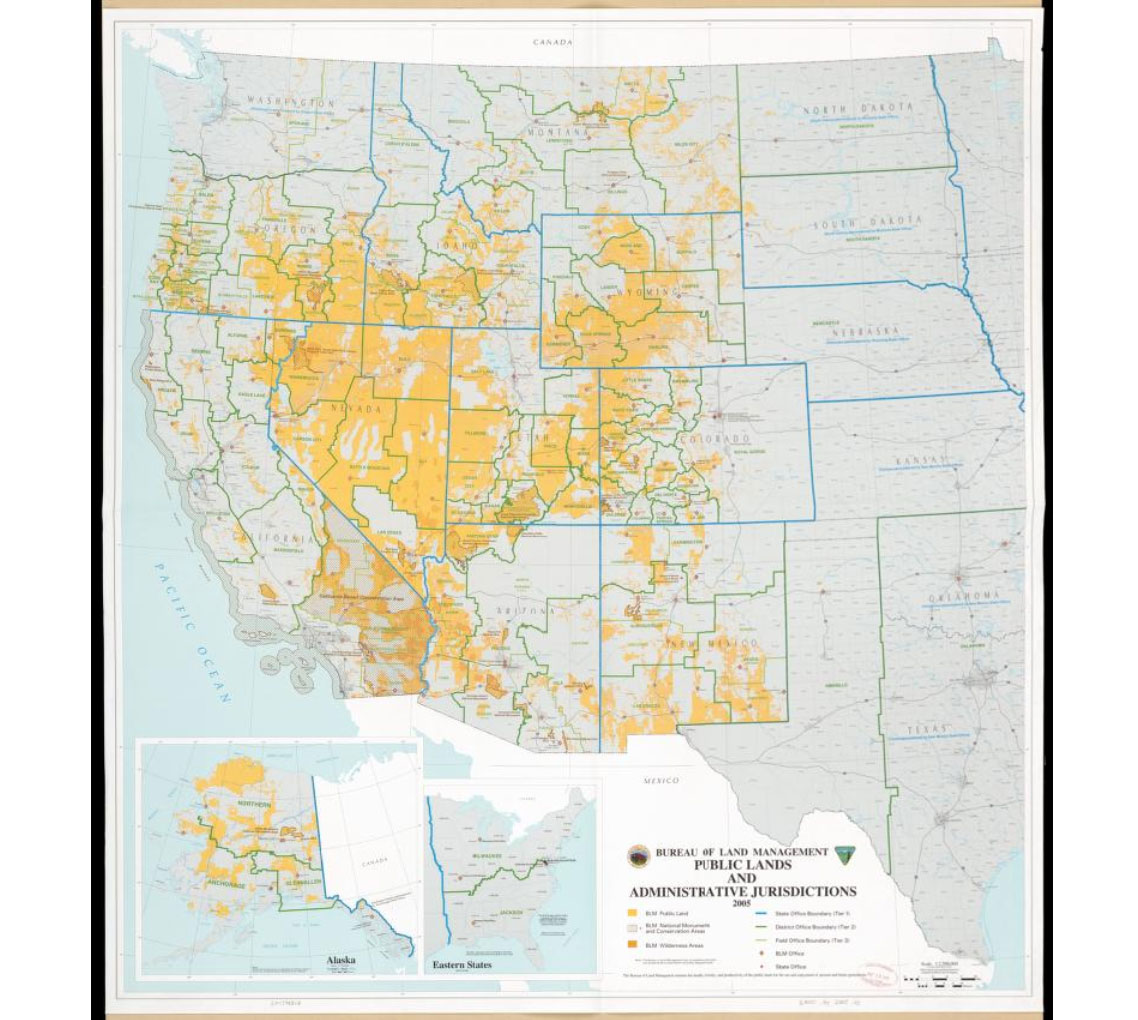
Library of Congress
The related restoration leasing provision is even more exciting, because it enables and encourages collaborative, market-based conservation, says Yablonski, whose group formally supported conservation leasing in comments submitted to the BLM when the public-land rule was in draft form.
“I think the concern over this tool stems from the fact that it’s new, and it’s different, and until the first projects are proposed, it’s untried,” he says. “But here’s an example: A landowner and wildlife agency identify an impediment to pronghorn migration. This leasing tool could pay for fence modification or habitat work to reduce migration barriers while supporting existing uses of the land.”
The unnamed source envisions restoration leasing being used by non-governmental groups such as the Mule Deer Foundation or the Rocky Mountain Elk Foundation to direct funds and volunteer work to improve wildlife habitat on impaired BLM land.
“These are tools that can be used, where it’s warranted, to restore big chunks of BLM ground that are degraded, because clearly BLM cannot do this on their own,” says the source. “If they would, then we wouldn’t have this problem. They are literally asking for help to improve degraded BLM public lands, and now they’ll have more tools.”
Yablonski says as conservation leasing matures, the idea of conservation credits and credit banking could become normalized in public-land management. Similar to how carbon credits are used to offset fossil-fuel development, conservation credits could incentivize beneficial uses on BLM land. And the leasing mechanism could even become a source of additional income for traditional BLM lease-holders.
Yablonski says conservative lawmakers shouldn’t be alarmed by the leasing provision. After all, it’s a well-established tool for delivering conservation on private land.
“When you have willing parties negotiating a conservation easement or an elk-occupancy agreement, that’s essentially conservation leasing in practice,” says Yablonski. “We already use and support all these innovative tools on private property. Where they’re not utilized in a similar process is on public land, because up until now it hasn’t been allowed on public land. That’s a rich irony right there.”
Yablonski points out the alternative to collaborative conservation is litigation.
“The one thing that unites everybody around public-land management is a recognition that litigation isn’t a healthy or productive outcome,” says Yablonski. “So shame on us that we haven’t provided an alternative. This [conservation leasing] is the first glimmer of an alternative.”
The WEST Act will move to the Senate for its consideration. Sources say that the Democrat-majority Senate is almost sure to reject the provision, meaning the BLM’s rules will likely move toward implementation.
“Our sense is that this will die in the Senate, and if it does pass obviously Biden won’t sign it,” says Yablonski. “But [the congressional opposition] does send a message to a new administration, and it becomes a narrative that perpetuates the swinging of the pendulum from one administration to the next. What is needed instead are consistent rules that enable sustainable management of our public lands.”

